Hampton Court is a magnificent palace, standing on the banks of the river Thames, just a short drive from London. It has everything. The palace is a harmonious blend of Tudor and Neo-Classical architecture set in glorious gardens. And there is history, lots of it, from Cardinal Wolsey and Henry VIII to William and Mary. Its rooms are packed with splendid paintings. There is something for everyone, kids included and here are 10 of my favourite reasons to visit Hampton Court Palace.
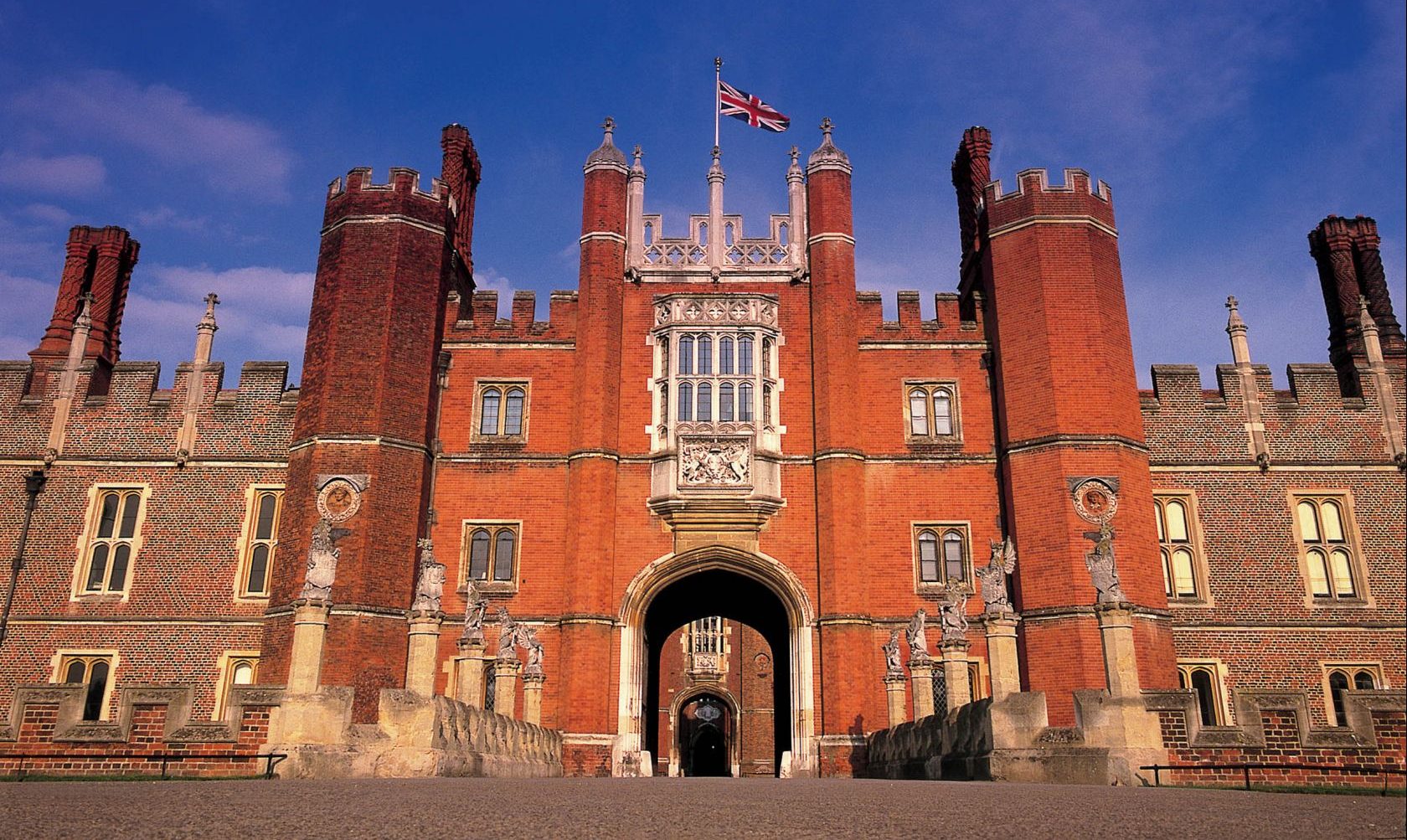 Hampton Court Palace – Anne Boleyn’s Archway from Base Court. Photo Credit: ©Historic Royal Palaces / Chris Capstick.
Hampton Court Palace – Anne Boleyn’s Archway from Base Court. Photo Credit: ©Historic Royal Palaces / Chris Capstick.
1) Our story begins as we enter Hampton Court Palace’s impressive West Gateway. Ahead is Base Court, built by Cardinal Thomas Wolsey, who was, apart from King Henry VIII, the richest and most powerful man in the land. The gate house is decorated with brightly glazed terracotta roundels of Roman Emperors, befitting a proud man who wished to identify himself with emperors. He lived and entertained in splendour but his fall was quick when he failed to secure his king’s divorce from Katharine of Aragon.
2) Anne Boleyn’s Gate House leads to Clock Court, flanked by Henry VIII’s Great Hall. No expense was spared! Henry employed 70 masons, 45 carpenters, 81 bricklayers and 208 labourers between 1532 and 1535. What catches our attention in Clock Court is Nicholas Oursian’s Astronomical Clock. Dated 1540, it has at its centre the sun revolving round the earth. (At the time Copernicus and Galileo were seen as heretics). Not only does it tell the time but also movements of the moon, the number of days since New Year and most remarkable of all, high water at London Bridge.
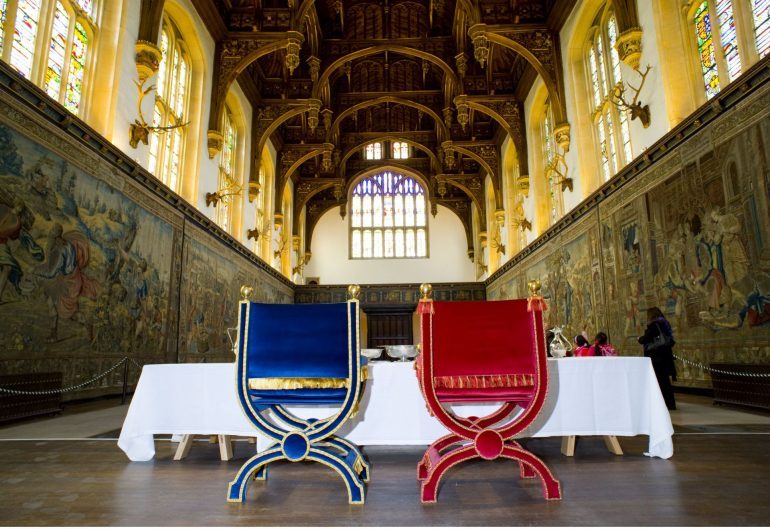 Hampton Court Palace – The Great Hall. Photo Credit: ©Historic Royal Palaces.
Hampton Court Palace – The Great Hall. Photo Credit: ©Historic Royal Palaces.
3) Henry VIII’s Great Hall is surmounted by a sumptuous hammer beam roof. He wanted to impress and impress it does. It was here that minor members of Court would dine in two sittings. The walls are adorned with a series of Flemish tapestries relating the History of Abraham. They are woven with silver and gold thread and are, apart from the Crown Jewels, the most valuable antiquities in the Royal Collection.
4) Look out for the ghost of Catherine Howard in the Haunted Gallery. She was Henry’s fifth wife and foolishly kept up with previous lovers. She was kept under house arrest at Hampton Court Palace and her ghost is said to run along the gallery to plead for mercy from Henry while he was at Mass. It was to no avail. She was accused of leading an “abominable, base, carnal, voluptuous and vicious life, like a common harlot, with divers persons”, and lost her head at the Tower of London.
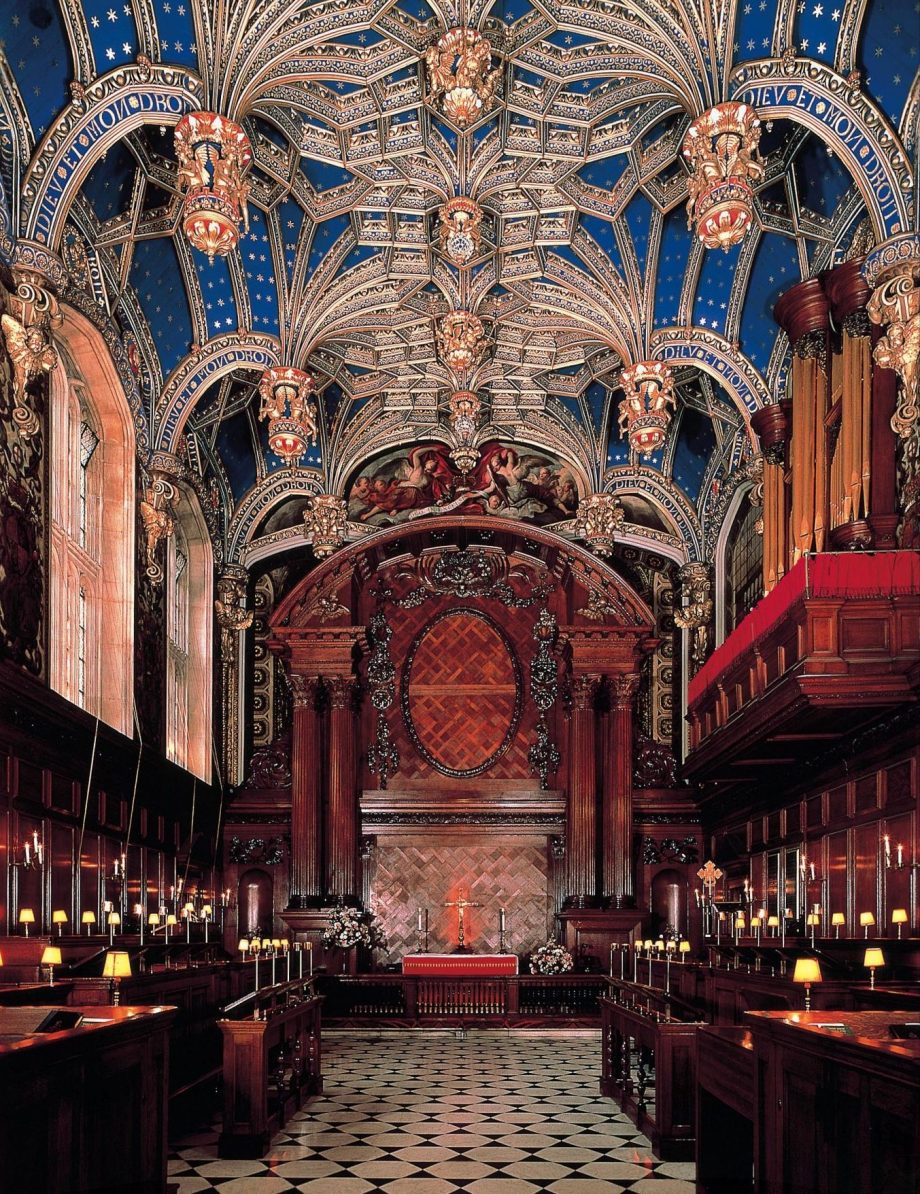 Hampton Court Palace – The Chapel Royal has been in continuous use for over 450 years. The magnificent vaulted ceiling was installed by Henry VIII in 1535-6. Photo Credit: ©Historic Royal Palaces.
Hampton Court Palace – The Chapel Royal has been in continuous use for over 450 years. The magnificent vaulted ceiling was installed by Henry VIII in 1535-6. Photo Credit: ©Historic Royal Palaces.
5) Henry VIII would hear Mass in the private Holyday Closet. It looked down on the beautiful Chapel Royal. Begun by Wolsey in 1514, it has a glorious fan vaulted ceiling installed for Henry in 1535. The reredos has intricate carving by Grinling Gibbons replacing an east window smashed in the civil War and there is a trompe l’oeìl window by Sir James Thornhill. Henry’s longed-for son, Edward VI, was baptised here. He failed to reach adulthood.
6) Henry VIII enlarged the kitchens, first begun by Wolsey. He needed to; he would be accompanied by as many as 800 servants when resident at Hampton Court Palace. The kitchens are still there for us to marvel at today. They dined in style, for to be fat was fashionable, because it indicated wealth. There are six fireplaces where meat, poultry and fish would be prepared. There were wine and beer cellars as well. The Spanish ambassador commenting that “there is plenty of beer here and they drink more than would fill the Valladolid river.”
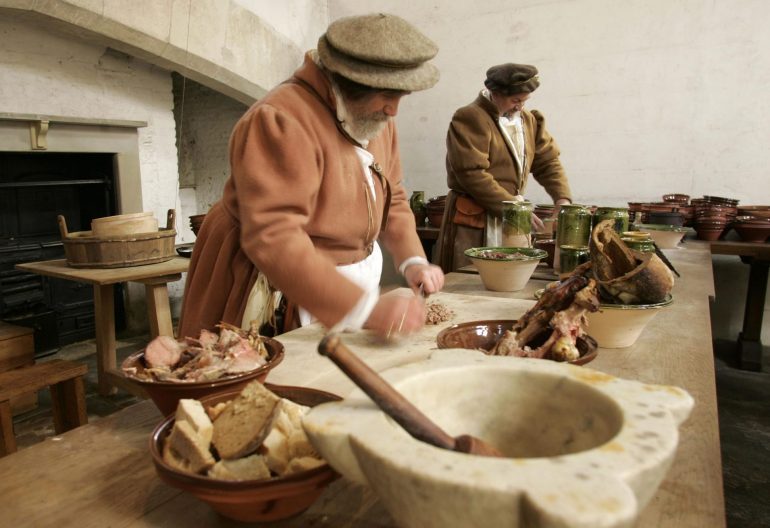
Hampton Court Palace – Tudor Kitchens. Photo Credit: ©Historic Royal Palaces / Richard Lea-Hair.
7) William and Mary came to the throne in 1689 and immediately commissioned Sir Christopher Wren and Nicholas Hawksmoor to rebuild Hampton Court Palace in the Renaissance style. The result is the luxuriant King’s and Queen’s Apartments. The King’s Apartments are entered via a shallow staircase (William had asthma) with walls and ceiling decorated with frescoes by the Italian, Antonio Verrio. Ahead, an allegorical painting celebrates the Glorious Revolution. The Apartments have been lovingly restored after a serious fire in 1992 and house a splendid collection of paintings.
8) William III and his wife Mary loved gardens. To the south of the King’s Apartments were the magnificent Privy Gardens, laid out under William’s personal supervision. After the fire in William’s King’s Apartments, it was possible by archaeological excavations to reveal the outline of the original Baroque gardens and by consulting original documents the Privy Garden of William and Mary has now been restored to its former glory.
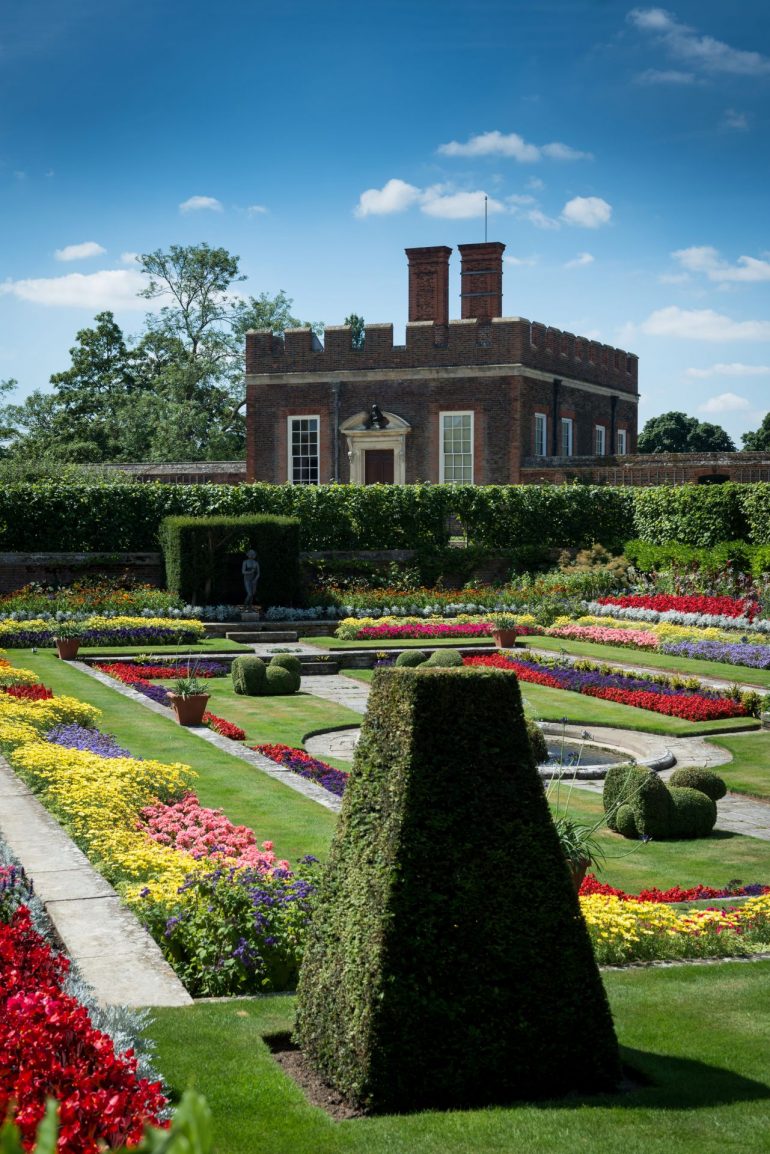
Hampton Court Palace – garden. Photo Credit: ©Historic Royal Palaces / Richard Lea-Hair.
9) Some say it is easy to get lost in the myriad rooms and passages at Hampton Court Palace. But you can really get lost in the maze in the palace gardens. You will be in good company. It featured in Jerome K. Jerome’s “Three Men in a Boat (To Say Nothing of the Dog)”. Harris recounts being lost with a party “who had given up hope of seeing their homes and families again”. They were forced to yell for help. A keeper duly arrived but got lost and the party had to wait for a more experienced keeper to rescue them.
10) But that’s not all. Hampton Court Palace houses the priceless Triumphs of Caesar by Andrea Mantegna. Lawrence “Capability” Brown planted the Great Vine; its grapes are on sale in season. Wolsey’s Rooms house exhibitions; “The Young Henry” is there at present. There are fine paintings in the Georgian Rooms, including the Raphael Cartoons. A Real Tennis court was installed in the Stuart era. Samuel Pepys, observing Charles I play, remarked how he was “sickened to see how the king’s play was extolled without any cause at all”
Why not walk in the footsteps of Henry VIII, get lost in the maze, marvel at the works of art and be guided by an expert registered Blue Badge Tourist Guide at one of England’s finest palaces – Hampton Court.



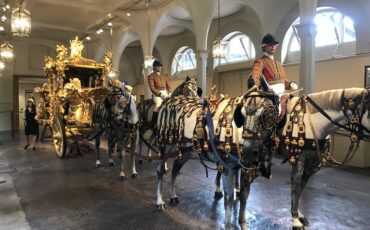
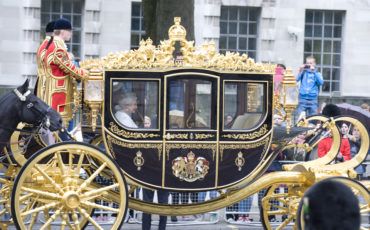


Thanks for this, Geoffrey. I love visiting Hampton Court Palace. It would be nearly impossible to pick one favourite thing but Grinling Gibbons’ amazing, delicate wood carvings are right at the top of the list for me.